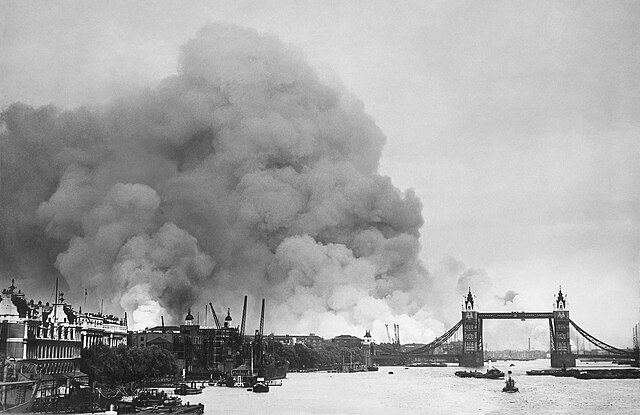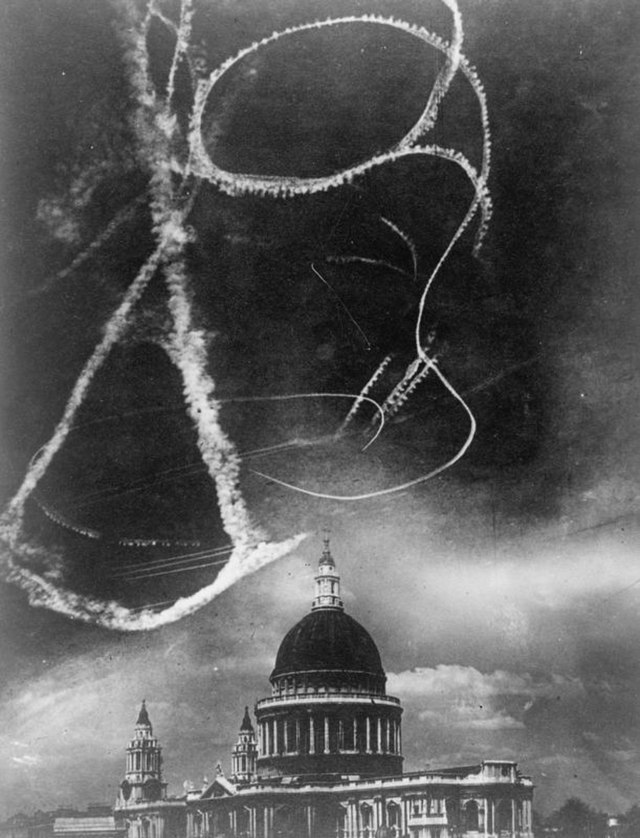
BRITAIN STANDS STRONG
As we step into Phase Four of the Battle of Britain, a chilling shift begins to unfold - one that would alter not just the course of the war, but the very rhythm of daily life across the United Kingdom. By late summer 1940, the skies above Britain had already become a crucible of fire and steel. For months, RAF pilots had fought tooth and nail to fend off relentless Luftwaffe attacks, while those on the ground toiled to keep aircraft flying, factories producing, and hope alive.
But the targets began to move inland, deeper, closer to home. What had been a campaign fought over fields and coastlines now drifted, almost imperceptibly, towards the cities. The war was no longer just on the frontlines or in the air - it was sneaking down the winding curves of the River Thames, slipping through the night sky above the rooftops of London, and descending with a deadly silence upon sleeping streets.
Then came the night of September 7th, 1940.
Phase 4: The Blitz Begins

The Blitz marked a brutal escalation. For 57 consecutive nights, London was bombarded by wave after wave of German bombers. The city burned under a sky lit by fire and framed by sirens, with the relentless drone of engines overhead. The Luftwaffe's focus had shifted from military targets to the civilian heart of Britain, where its cities, industries and homes were the prime targets. Entire streets vanished overnight, and families huddled in tube stations, praying the bombs wouldn’t find them. The cost in human lives and spirit was immense.
Yet amid the devastation, something extraordinary happened. Rather than crumbling, the British people found a steely, defiant resolve. "Keep Calm and Carry On" was more than just a slogan; it was a way of life. Firefighters, wardens and ordinary citizens emerged as unsung heroes. Children were evacuated, communities rallied around one another, and life went on - battered of course, but definitely not broken. The Blitz did not destroy British morale but, instead, forged it into something unshakable.

Strategically, however, the Blitz was a miscalculation by Hitler: the shift away from crippling the RAF gave Britain precious time to rebuild its squadrons, reorganise its defences and reinforce radar networks. Fighter Command regained strength, allowing British Spitfires and Hurricanes to regain control of the skies. The skies over southern England once again echoed with the defiant roars of British engines intercepting German bombers.
Britain’s retaliation came not just from its pilots, but from its resilience and its refusal to bow. In time, Britain took the war to Germany. The RAF’s Bomber Command began raids on German industrial centres, targeting oil refineries, armament factories and, eventually, German cities. These retaliatory strikes marked the beginning of an air war that would rage until the end of the conflict. Britain had taken the punch - but now it was their time to strike back.
The Blitz remains one of the most haunting and heroic chapters of the Second World War. It was a campaign of terror meant to crush a nation’s spirit, yet it awakened something deeper - a unity, a courage, a will to fight on. In our next and final instalment, we will explore how the Battle of Britain reached its pivotal conclusion.



